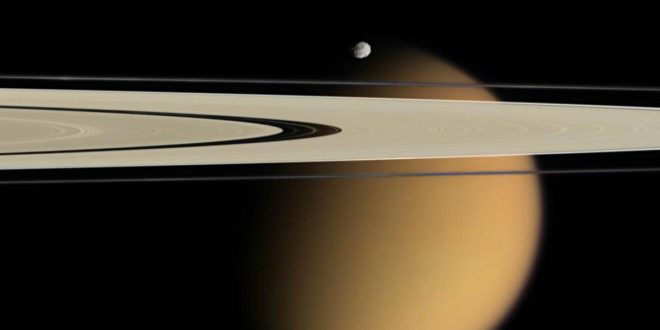Cassini is going to dive the outer edge rings of Saturn from Nov. 30 to April 22.
According to news from NASA, a great event is going to happen from Nov. 30 to April 22 when Cassini will dive through Saturn rings. This dive would happen 20 times, once in a week.
Cassini and its attached Huygens probe launched from Cape Canaveral in 1997 to take a complicated path past Venus, Earth and then Jupiter before arriving at Saturn’s system in 2004.
In more than 12 years of investigating the distant ringed planet, the spacecraft has collected enormous amount of valuable scientific data. Not only has it discovered methane seas on Saturn’s moon Titan and an underground ocean on another satellite, Enceladus, it also transmitted to Earth information about moons that scientists never knew existed.
The probe’s historic space journey is scheduled to conclude in September 2017, but before it dives into Saturn’s atmosphere, Cassini will complete a two-phase farewell mission, called by scientists “the Grand Finale.”
In the initial phase, the spacecraft will conduct 20 daring dives through the rings of the gas giant planet, once every seven days. It will approach to as close as 7,800 kilometers (4,850 miles) from the center of the narrow F ring, the furthest ring from the planet that features constantly changing streamers, filaments and dark channels that change over the course of hours.
“We’re calling this phase of the mission Cassini’s Ring-Grazing Orbits, because we’ll be skimming past the outer edge of the rings,” Linda Spilker, Cassini project scientist at NASA’s Jet Propulsion Laboratory (JPL) in California, said in a statement.
The dangerous maneuver will let the spacecraft enter uncharted territory and get the closest look ever at Saturn’s atmosphere and composition, NASA says. What’s more important, using special technology, it will be able to collect sample icy particles and gases from the ring planes for analysis.
Agencies/Canadajournal
 Canada Journal – News of the World Articles and videos to bring you the biggest Canadian news stories from across the country every day
Canada Journal – News of the World Articles and videos to bring you the biggest Canadian news stories from across the country every day



